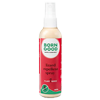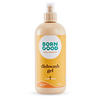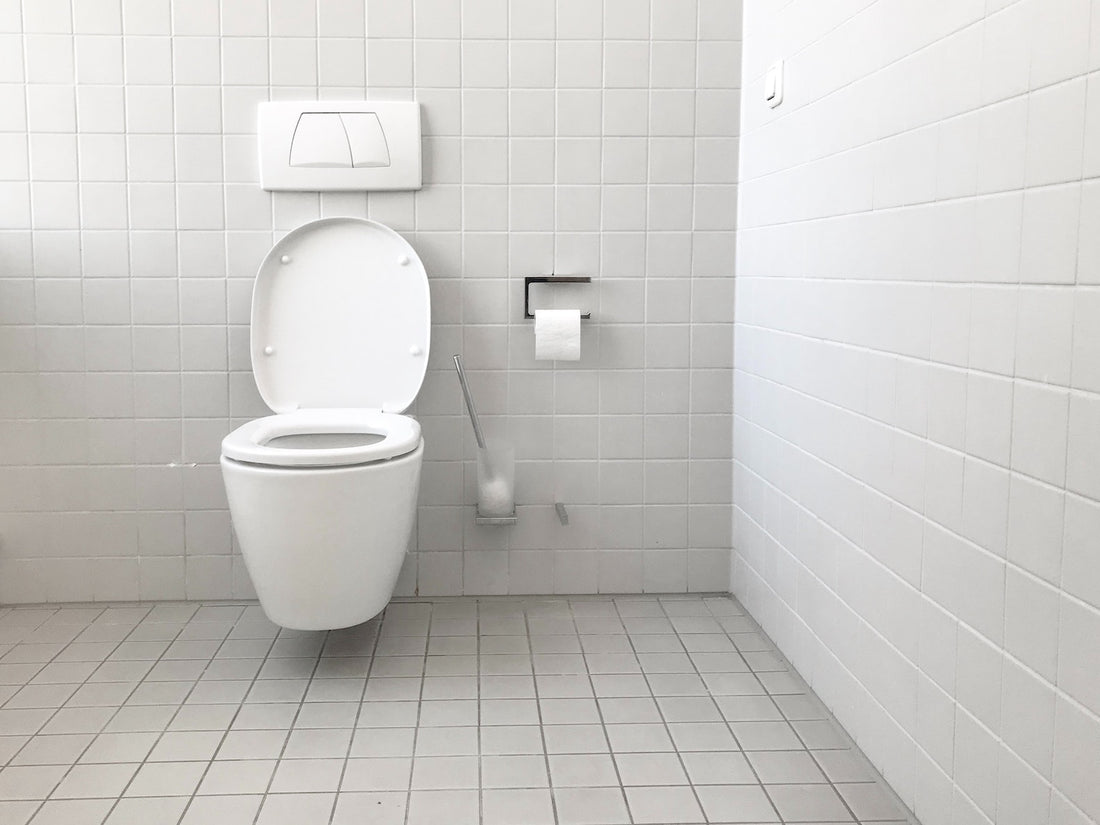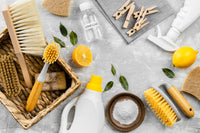Plonk. Scroll. Poop. Scroll. Question all your life’s decisions. Wash.
Sounds like any other morning right? For some of us, social media surfing on the potty is that much needed “me-time” before the grind of the day begins. And, nothing puts a damper on potty more than a stained WC. Ironic right? But it’s true! You don’t feel like doing the dirty on an already dirty pot. So, let’s save that blissful “me-time” and learn how to keep those yellow and brown stains away? Scroll down to read our guide on keeping your toilet bowl white and shiny.
Why do toilets get stained?
Before we get to the how, let’s understand the why first. Sometimes it’s not your fault! Those yellow and brown stains aren’t left over from your morning business. Let’s understand their causes by colour:
- Yellow stains on your toilet bowls are indicative of calcium/ limestone buildup. Hard water is full of minerals. Deposits left by the water can stain your toilet bowls over time. While this definitely isn’t very aesthetic, it’s also indicative of mineral buildup in your pipes, which can reduce water pressure and eventually also block your toilet.
- Reddish brown stains indicate rusty pipes. Alternatively, they could also indicate that the water running through your pipes is rich in iron. The iron ore oxidizes and forms brownish stains on your bowl. If you have these, then it’s time to call the plumber before the pipes blow.
- Blue stains are caused by copper ore in your water. Yes, contrary to popular misconception, the copper ore is blue not orange! These stains are indicative of extremely acidic water.
- Dark green or gray-ish black stains are caused by mould. These are the yuckiest of the lot, and are accompanied by an unpleasant musky odour. They are the most dangerous, because these stains spread if left unchecked. Furthermore, the fungus growing within it is dangerous to inhale.
How often do you clean the toilet bowl?
The answer lands right in between the “germaphobic” and the “I’m too lazy” poles of the cleaning spectrum. We recommend cleaning your toilet bowls every two-three days, and deep cleaning it once a month.
How to clean the toilet bowl?
1) Regular Cleaning
For your routine tri-weekly disinfecting, invest in a good toilet cleaner. We suggest you opt for an eco-friendly variant to keep your bowl free from chemical induced stains, the pipes protected from acids and the ocean waters toxin free. Hint hint, you can cart Born Good’s toilet bowl cleaner right here! It’s enriched with the goodness of coconut which is a natural germicide and prevents mineral deposits.
Here’s how you can use it for your regular cleaning:
Step 1: Squirt the eco-friendly Born Good toilet bowl cleaner on the edge of the bowl and under the rim.
Step 2: Let the toilet bowl cleaner liquid do its plant-based magic for 10-20 minutes.
Step 3: Brush the bowl lightly with a toilet brush.
Step 4: Flush.
2) Deep-cleaning
Remember those stains we read about? While regular cleaning with a toilet cleaner is great for disinfecting your toilet bowl from germs and bacteria, deep cleaning helps target those stains and keep your toilet bowl pearly white.
For deep-cleaning, you will need:
- Baking soda
- Salt
- Distilled White Vinegar
- Empty spray bottle
- Rubber gloves
- Old toothbrush
- Toilet cleaning bristle brush
Here’s how to deep-clean your toilet bowl:
Step 1: Flush the toilet to moisten the bowl.
Step 2: Apply baking soda under the rim and on the stains with the help of a moistened old toothbrush or with your rubber gloved hand.
Step 3: Fill your empty spray bottle with vinegar.
Step 4: Spritz the baking soda coated rim and stains with the vinegar.
Step 5: Allow the baking soda and vinegar to fizz and set for at least 15 minutes.
Step 6: Scrub the mixture away with the toilet cleaning brush.
Step 7: Flush.

You can also opt to use a mix of lemon juice and a few drops of essential oil instead of vinegar. This process helps get rid of yellow, blue and green stains. For brown stains, replace the baking soda with salt, leave for 2-3 hours, scrub and flush.
Pro tip: If those stains are too pesky, you can also pumice them away! Since porcelain is a stronger stone than pumice, scrubbing gently with a moistened pumice stone won’t damage your toilet bowl.
Unfortunately, we’re not done. Deep-cleaning also entails literal deep cleaning of the toilet’s tank and siphon jets. How do we do that? Scroll down.
Step 1: Turn off the water to your toilet using the shutoff valve at the base of your toilet.
Step 2: Flush to empty the tank.
Step 3: Fill the tank with vinegar. Enough to submerge the flapper at the bottom of your tank.
Step 4: Let it steep for 10-20 minutes.
Step 5: Flush to allow the vinegar to wash through the jets. This removes the mineral deposits from the tank too, helping with better water pressure.
Step 6: Open the valve and allow the tank to refill.
We know it sounds so much easier to just put one of those toilet cleaning tablets into the tank right? But those turn the stagnant water in the tank into caustic liquid which harms the rubber components of your flushing mechanism. So, it’s much better for your flush and bum to keep the chemicals away!
Pro-tip: Your cleaning is only as good as the tools you use. So, disinfect your toilet cleaning brush! Wash it with warm water and let it dry over your toilet bowl or leave it in the sun for a few hours.
Now, we’re done! Don’t worry, you don’t have to deep clean very often. Once a month should be enough. But remember to use Born Good’s plant based and non-toxic toilet bowl cleaner a.k.a the best toilet cleaner in India, and keep the vinegar spray bottle handy. Anytime you see a stain, spritz away so that it doesn’t set in. Let us know which tip helped you the most and if we missed any toilet cleaning hacks in the comments below.










